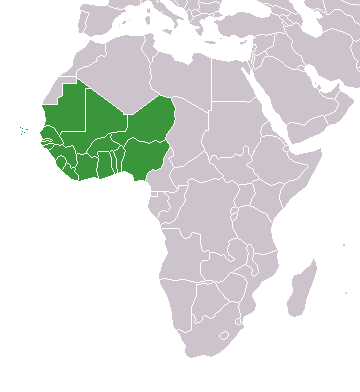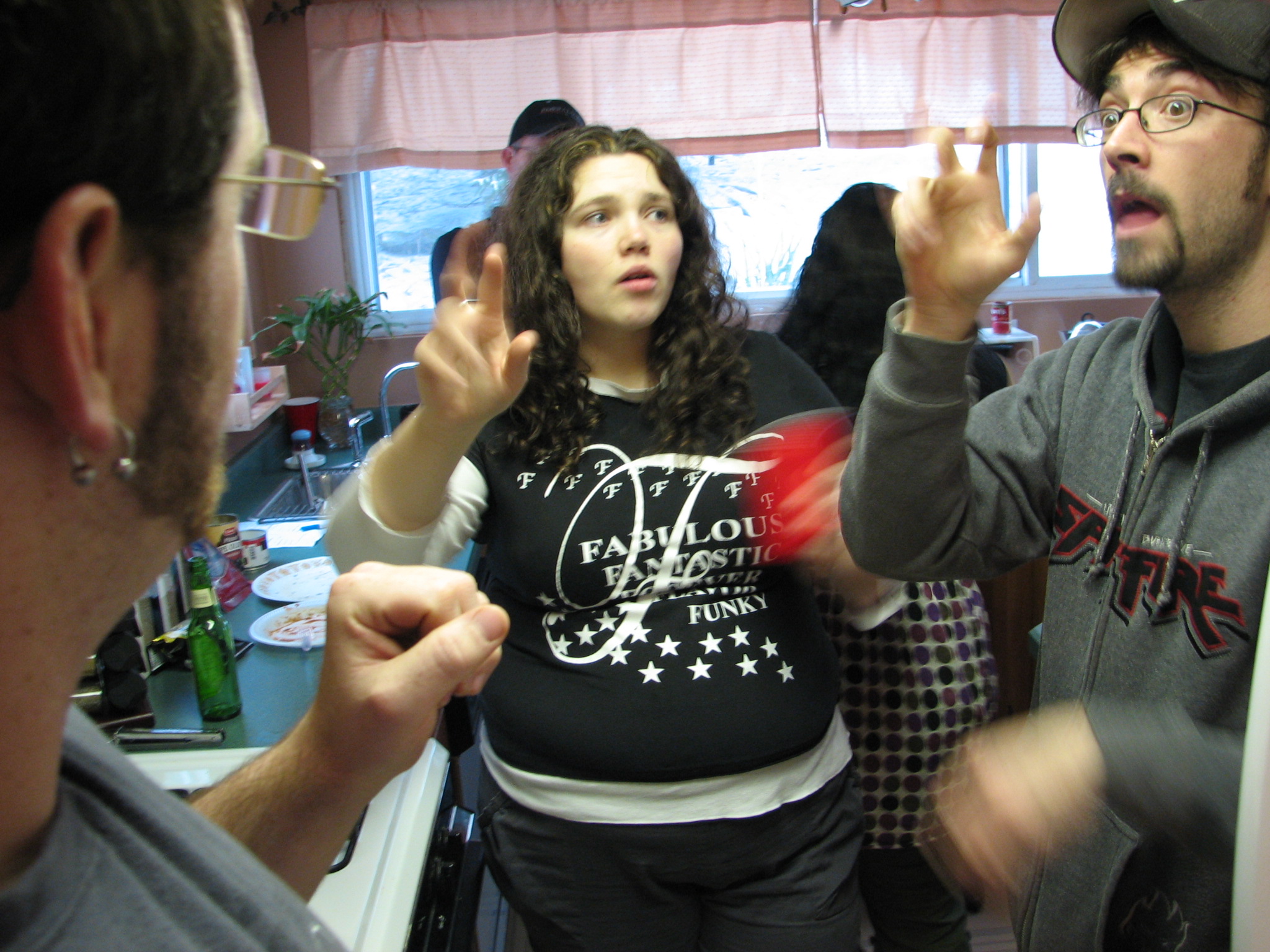|
American Sign Language
American Sign Language (ASL) is a natural language that serves as the predominant sign language of Deaf communities in the United States of America and most of Anglophone Canada. ASL is a complete and organized visual language that is expressed by employing both manual and nonmanual features. Besides North America, dialects of ASL and ASL-based creoles are used in many countries around the world, including much of West Africa and parts of Southeast Asia. ASL is also widely learned as a second language, serving as a lingua franca. ASL is most closely related to French Sign Language (LSF). It has been proposed that ASL is a creole language of LSF, although ASL shows features atypical of creole languages, such as agglutinative morphology. ASL originated in the early 19th century in the American School for the Deaf (ASD) in West Hartford, Connecticut, from a situation of language contact. Since then, ASL use has been propagated widely by schools for the deaf and Deaf commu ... [...More Info...] [...Related Items...] OR: [Wikipedia] [Google] [Baidu] |
Black American Sign Language
Black American Sign Language (BASL) or Black Sign Variation (BSV) is a dialect of American Sign Language (ASL) used most commonly by deaf African Americans in the United States. The divergence from ASL was influenced largely by the segregation of schools in the American South. Like other schools at the time, schools for the deaf were segregated based upon race, creating two language communities among deaf signers: white deaf signers at white schools and black deaf signers at black schools. As of BASL is still used by signers in the South despite public schools having been legally desegregated since 1954. Linguistically, BASL differs from other varieties of ASL in its phonology, syntax, and vocabulary. BASL tends to have a larger signing space, meaning that some signs are produced further away from the body than in other dialects. Signers of BASL also tend to prefer two-handed variants of signs, while signers of ASL tend to prefer one-handed variants. Some signs are different ... [...More Info...] [...Related Items...] OR: [Wikipedia] [Google] [Baidu] |
American Sign Language ASL
American(s) may refer to: * American, something of, from, or related to the United States of America, commonly known as the "United States" or "America" ** Americans, citizens and nationals of the United States of America ** American ancestry, people who self-identify their ancestry as "American" ** American English, the set of varieties of the English language native to the United States ** Native Americans in the United States, indigenous peoples of the United States * American, something of, from, or related to the Americas, also known as "America" ** Indigenous peoples of the Americas * American (word), for analysis and history of the meanings in various contexts Organizations * American Airlines, U.S.-based airline headquartered in Fort Worth, Texas * American Athletic Conference, an American college athletic conference * American Recordings (record label), a record label previously known as Def American * American University, in Washington, D.C. Sports teams Soccer * Ba ... [...More Info...] [...Related Items...] OR: [Wikipedia] [Google] [Baidu] |
Si5s
si5s is a writing system for American Sign Language that resembles a handwritten form of SignWriting. It was devised in 2003 in New York City by Robert Arnold, with an unnamed collaborator. In July 2010 at the Deaf Nation World Expo in Las Vegas, Nevada, it was presented and formally announced to the public. Soon after its release, si5s development split into two branches: the "official" si5s track monitored by Arnold and a new set of partners at ASLized, and the "open source" ASLwrite. In 2015, Arnold had a falling out with his ASLized partners, took down the si5s.org website, and made his Twitter account private. ASLized has since removed any mention of si5s from their website. Arnold completed his Masters thesis, "A Proposal Of the Written System For ASL," at Gallaudet University in 2007, looking at the need for a written form for ASL, and proposing the use of si5s. si5s stresses that the "written system is not to offer readers and scholars how sign language functions but ... [...More Info...] [...Related Items...] OR: [Wikipedia] [Google] [Baidu] |
Lingua Franca
A lingua franca (; ; for plurals see ), also known as a bridge language, common language, trade language, auxiliary language, vehicular language, or link language, is a language systematically used to make communication possible between groups of people who do not share a native language or dialect, particularly when it is a third language that is distinct from both of the speakers' native languages. Lingua francas have developed around the world throughout human history, sometimes for commercial reasons (so-called "trade languages" facilitated trade), but also for cultural, religious, diplomatic and administrative convenience, and as a means of exchanging information between scientists and other scholars of different nationalities. The term is taken from the medieval Mediterranean Lingua Franca, a Romance-based pidgin language used especially by traders in the Mediterranean Basin from the 11th to the 19th centuries. A world language – a language spoken internationally an ... [...More Info...] [...Related Items...] OR: [Wikipedia] [Google] [Baidu] |
Southeast Asia
Southeast Asia, also spelled South East Asia and South-East Asia, and also known as Southeastern Asia, South-eastern Asia or SEA, is the geographical United Nations geoscheme for Asia#South-eastern Asia, south-eastern region of Asia, consisting of the regions that are situated south of mainland China, east of the Indian subcontinent, and north-west of mainland Australia. Southeast Asia is bordered to the north by East Asia, to the west by South Asia and the Bay of Bengal, to the east by Oceania and the Pacific Ocean, and to the south by Australia (continent), Australia and the Indian Ocean. Apart from the British Indian Ocean Territory and two out of atolls of Maldives, 26 atolls of Maldives in South Asia, Maritime Southeast Asia is the only other subregion of Asia that lies partly within the Southern Hemisphere. Mainland Southeast Asia is completely in the Northern Hemisphere. East Timor and the southern portion of Indonesia are the only parts that are south of the Equator. Th ... [...More Info...] [...Related Items...] OR: [Wikipedia] [Google] [Baidu] |
West Africa
West Africa or Western Africa is the westernmost region of Africa. The United Nations defines Western Africa as the 16 countries of Benin, Burkina Faso, Cape Verde, The Gambia, Ghana, Guinea, Guinea-Bissau, Ivory Coast, Liberia, Mali, Mauritania, Niger, Nigeria, Senegal, Sierra Leone, and Togo, as well as Saint Helena, Ascension and Tristan da Cunha ( United Kingdom Overseas Territory).Paul R. Masson, Catherine Anne Pattillo, "Monetary union in West Africa (ECOWAS): is it desirable and how could it be achieved?" (Introduction). International Monetary Fund, 2001. The population of West Africa is estimated at about million people as of , and at 381,981,000 as of 2017, of which 189,672,000 are female and 192,309,000 male. The region is demographically and economically one of the fastest growing on the African continent. Early history in West Africa included a number of prominent regional powers that dominated different parts of both the coastal and internal trade networ ... [...More Info...] [...Related Items...] OR: [Wikipedia] [Google] [Baidu] |
Nonmanual Feature
A Nonmanual feature, also sometimes called nonmanual signal or sign language expression, are the features of signed languages that do not use the hands. Nonmanual features are gramaticised and a necessary component in many signs, in the same way that manual features are. Nonmanual features serve a similar function to intonation in spoken languages. Purpose Nonmanual features in signed languages do not function the same way that general body language and facial expressions do in spoken ones. In spoken languages, they can give extra information but are not necessary for the receiver to understand the meaning of the utterance (for example, an autistic person may not use any facial expressions but still get their meaning across clearly, and people with visual impairements may understand spoken utterances without the need for visual aides). Conversely, nonmanual features are needed to understand the full meaning of many signs, and they can drastically change the meaning of individual ... [...More Info...] [...Related Items...] OR: [Wikipedia] [Google] [Baidu] |
Anglophone Canadians
Canada comprises that part of the population within Canada, whether of British origin or otherwise, that speaks English. The term ''English Canada'' can also be used for one of the following: #Describing all the provinces of Canada that have an anglophone majority. This is every province except Quebec. When used in this way, ''English Canada'' is often referred to as the "ROC" (Rest of Canada). This type of usage excludes French-speaking areas in English-majority provinces like the East and North of New Brunswick, Northern and Eastern Ontario, Saint-Boniface and the few small pockets of French localities in Western Canada. #When discussing the culture, values and lifestyles of English-speaking Canadians as opposed to those of French-speaking Canadians. This usage is most often employed to compare English- and French-language literature, media, art and institutions. #When discussing the Two Solitudes, in which English Canada (i.e. the anglophones of Canada) is one of ... [...More Info...] [...Related Items...] OR: [Wikipedia] [Google] [Baidu] |
Sign Language
Sign languages (also known as signed languages) are languages that use the visual-manual modality to convey meaning, instead of spoken words. Sign languages are expressed through manual articulation in combination with non-manual markers. Sign languages are full-fledged natural languages with their own grammar and lexicon. Sign languages are not universal and are usually not mutually intelligible, although there are also similarities among different sign languages. Linguists consider both spoken and signed communication to be types of natural language, meaning that both emerged through an abstract, protracted aging process and evolved over time without meticulous planning. Sign language should not be confused with body language, a type of nonverbal communication. Wherever communities of deaf people exist, sign languages have developed as useful means of communication and form the core of local Deaf cultures. Although signing is used primarily by the deaf and hard of hearing ... [...More Info...] [...Related Items...] OR: [Wikipedia] [Google] [Baidu] |
Karen Nakamura
Karen Nakamura (born October 23, 1970) is an American academic, author, filmmaker, photographer and the Robert and Colleen Haas Distinguished Chair of Disability Studies and Professor of Anthropology at University of California, Berkeley. Previously she was Associate Professor of Anthropology and East Asian Studies and Chair of LGBT Studies at Yale University.Yale University Nakamura faculty bio notes/ref> Work Nakamura was awarded a B.A. in Psychology from Cornell University in 1993. She continued her studies at Yale University, earning an M.Phil. in Socio-Cultural Anthropology in 1998. She was awarded her Ph.D. at Yale in 2001. Nakamura is currently the Robert and Colleen Haas Distinguished Chair of Disability Studies and Professor of Anthropology at University of California, Berkeley. She has previously worked at Yale University, Macalester College, and Bowdoin College as well as a brief stint working for Canon/NeXT and heading her own company, Global Mapping Systems. Select ... [...More Info...] [...Related Items...] OR: [Wikipedia] [Google] [Baidu] |
Natural Language
In neuropsychology, linguistics, and philosophy of language, a natural language or ordinary language is any language that has evolved naturally in humans through use and repetition without conscious planning or premeditation. Natural languages can take different forms, such as speech or signing. They are distinguished from constructed and formal languages such as those used to program computers or to study logic. Defining natural language Natural language can be broadly defined as different from * artificial and constructed languages, e.g. computer programming languages * constructed international auxiliary languages * non-human communication systems in nature such as whale and other marine mammal vocalizations or honey bees' waggle dance. All varieties of world languages are natural languages, including those that are associated with linguistic prescriptivism or language regulation. ( Nonstandard dialects can be viewed as a wild type in comparison with sta ... [...More Info...] [...Related Items...] OR: [Wikipedia] [Google] [Baidu] |





